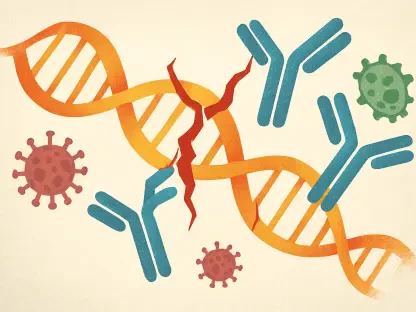Amid growing public health challenges, the introduction of Generative Artificial Intelligence (GenAI) offers a transformative breakthrough in developing youth health campaigns aimed at issues like vaping. GenAI’s efficiency has been spotlighted, showing the potential to drastically reduce the time lag between identifying public health threats and initiating effective responses, particularly among young audiences, who often are at high risk due to evolving health trends and behaviors.
Overview of the Youth Health Campaign Industry
The youth health campaign industry is currently navigating a complex landscape defined by technological advancements, changing youth behavior patterns, and regulatory pressures. GenAI, with its rapid content creation capabilities, has become a game-changer, enabling health officials to keep pace with dynamic youth trends and deliver timely interventions. Major market players such as health organizations, digital agencies, and tech firms are recognizing this shift and adapting to incorporate AI into their strategies. However, regulations surrounding AI usage, data privacy, and misinformation remain stringent, posing challenges for seamless innovation.
Emerging Trends and Opportunities
Key Trends Shaping the Industry
The acceleration of GenAI technology, coupled with evolving consumer habits, is reshaping the youth health landscape. Young people are increasingly tech-savvy, presenting valuable opportunities for GenAI to design targeted campaigns in a matter of minutes, reflecting trends like the rise of personalized health messaging. As AI develops, its role as a market driver is increasingly evident, offering new opportunities for co-designing campaigns with youth input for greater effectiveness.
Market Data and Projections
Market projections suggest substantial growth driven by AI innovations, with performance indicators pointing towards a stronger alignment of health campaigns with young audiences’ preferences. Forecasts from 2025 onwards predict that GenAI will continue to expand its influence, providing seamless integration with media platforms for enhanced youth engagement.
Challenges and Solutions
Despite its promise, GenAI implementation faces technological obstacles, such as the accuracy and ethical considerations of AI-generated content. Regulatory challenges also loom large, with strict guidelines on data security and content integrity. Market complexities arise from changing youth behaviors and preferences. Potential solutions involve creating robust frameworks that oversee GenAI use while harnessing its benefits. Strategies include enhancing transparency, establishing ethical guidelines, and fostering collaboration among stakeholders.
Regulatory Landscape
Significant laws and standards regulate the use of AI tools in public health communications. Recent regulatory changes aim to tackle issues like misinformation and data privacy, which affect campaign implementation. Compliance and security measures are paramount, requiring organizations to adopt stringent protocols to safeguard health information and maintain public trust.
Future Directions
Emerging technologies are set to shape the future of youth health campaigns, with AI poised as a key disruptor. Consumer preferences are expected to continue evolving, necessitating adaptable strategies. Future growth areas include the increased personalization of health communications and integrating AI-informed insights into campaign planning. Factors influencing the direction include technological advancements, regulatory shifts, and the demand for innovative health solutions.
Conclusion
In the past, incorporating GenAI into youth health campaigns revealed the dualities of using such technologies. On the one hand, it expedited the creation of timely and relevant content; on the other, it necessitated robust regulatory oversight to ensure ethical use. The exploration of AI’s behavioral impact highlighted its potential for enhancing health outcomes. Professionals in the field continue to pursue sustainable frameworks that balance innovation with ethical safeguarding, ensuring GenAI remains a positive force in public health. The findings and strategies from this study provide valuable insights for future integration of AI in campaign development, offering potential pathways for growth and impactful investment.









